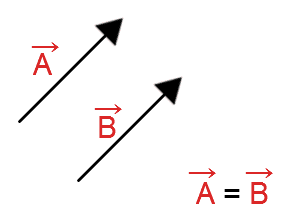We come across many physical quantities in our daily life. Some of the physical quantities need magnitude and direction for their proper representation while some does not. These quantities may have different value in different direction. So, the determination of nature of Physical quantity is very important for the precise study in Physics.
Scalar quantities: Those physical quantities which require only magnitude for their representation are called scalars quantities. In other words, it is a measurement which require only amount without specifying the direction. Physical quantities like distance, mass, time need only magnitude for their proper representation.
Vector quantities: Those physical quantities like force, velocity, momentum require magnitude as well as direction for their representation are called vector quantities. In other words, it is measurement that indicates both an amount and precision.
Differences between Scalars and Vector Quantities:
Types of vectors:
Unit vector: A vector having magnitude of unity (having length one) is called unit vector.
Unit Vector

Equal vectors
Vector and null vector

Collinear vectors
Coplaner vector
Orthogonal vectors
No comments:
Post a Comment